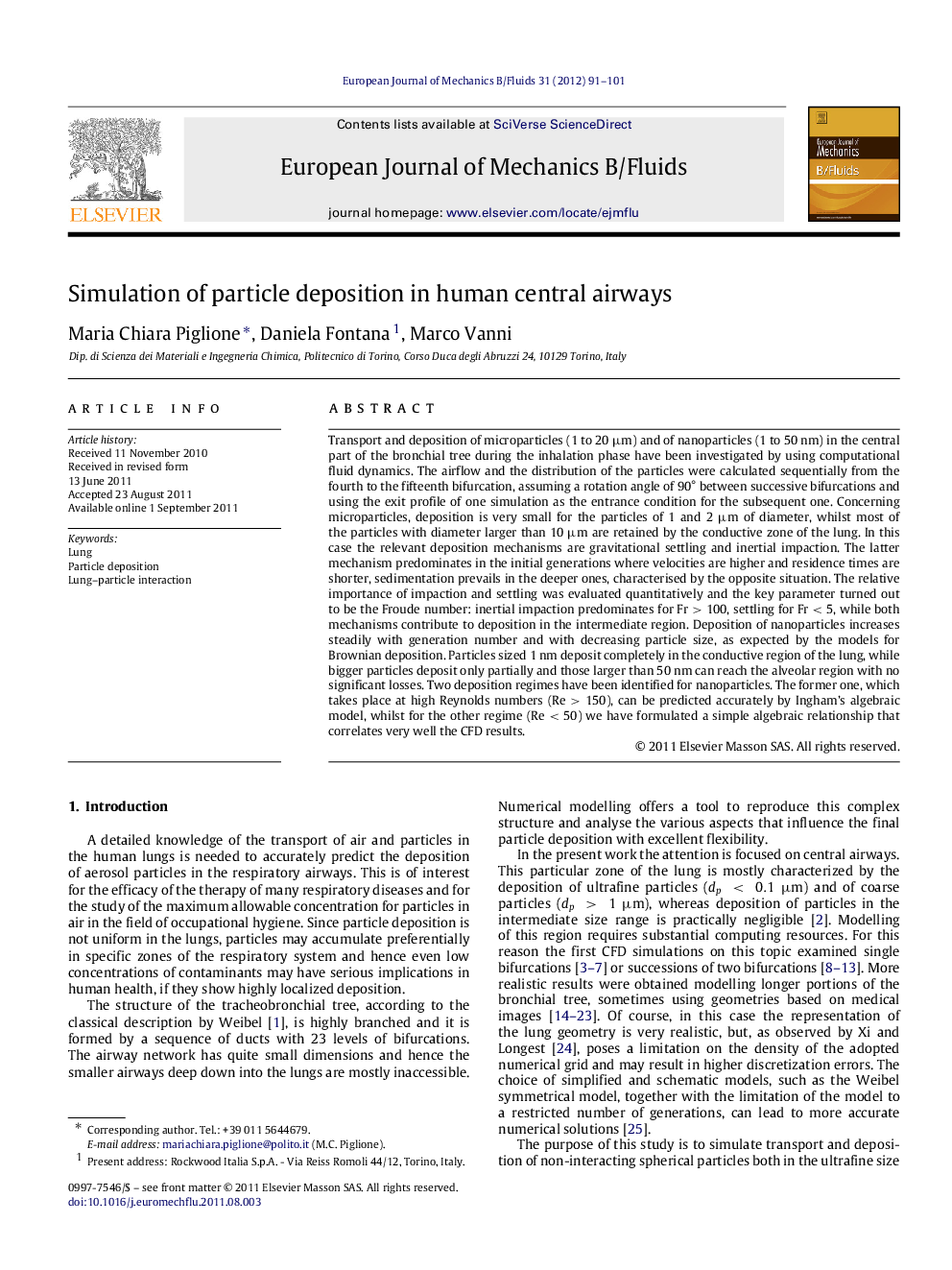| کد مقاله | کد نشریه | سال انتشار | مقاله انگلیسی | نسخه تمام متن |
|---|---|---|---|---|
| 650525 | 1457295 | 2012 | 11 صفحه PDF | دانلود رایگان |
عنوان انگلیسی مقاله ISI
Simulation of particle deposition in human central airways
دانلود مقاله + سفارش ترجمه
دانلود مقاله ISI انگلیسی
رایگان برای ایرانیان
کلمات کلیدی
موضوعات مرتبط
مهندسی و علوم پایه
مهندسی شیمی
جریان سیال و فرایندهای انتقال
پیش نمایش صفحه اول مقاله

چکیده انگلیسی
Transport and deposition of microparticles (1 to 20 μm) and of nanoparticles (1 to 50 nm) in the central part of the bronchial tree during the inhalation phase have been investigated by using computational fluid dynamics. The airflow and the distribution of the particles were calculated sequentially from the fourth to the fifteenth bifurcation, assuming a rotation angle of 90°between successive bifurcations and using the exit profile of one simulation as the entrance condition for the subsequent one. Concerning microparticles, deposition is very small for the particles of 1 and 2 μm of diameter, whilst most of the particles with diameter larger than 10 μm are retained by the conductive zone of the lung. In this case the relevant deposition mechanisms are gravitational settling and inertial impaction. The latter mechanism predominates in the initial generations where velocities are higher and residence times are shorter, sedimentation prevails in the deeper ones, characterised by the opposite situation. The relative importance of impaction and settling was evaluated quantitatively and the key parameter turned out to be the Froude number: inertial impaction predominates for Fr > 100, settling for Fr < 5, while both mechanisms contribute to deposition in the intermediate region. Deposition of nanoparticles increases steadily with generation number and with decreasing particle size, as expected by the models for Brownian deposition. Particles sized 1 nm deposit completely in the conductive region of the lung, while bigger particles deposit only partially and those larger than 50 nm can reach the alveolar region with no significant losses. Two deposition regimes have been identified for nanoparticles. The former one, which takes place at high Reynolds numbers (Re > 150), can be predicted accurately by Ingham's algebraic model, whilst for the other regime (Re < 50) we have formulated a simple algebraic relationship that correlates very well the CFD results.
ناشر
Database: Elsevier - ScienceDirect (ساینس دایرکت)
Journal: European Journal of Mechanics - B/Fluids - Volume 31, JanuaryâFebruary 2012, Pages 91-101
Journal: European Journal of Mechanics - B/Fluids - Volume 31, JanuaryâFebruary 2012, Pages 91-101
نویسندگان
Maria Chiara Piglione, Daniela Fontana, Marco Vanni,